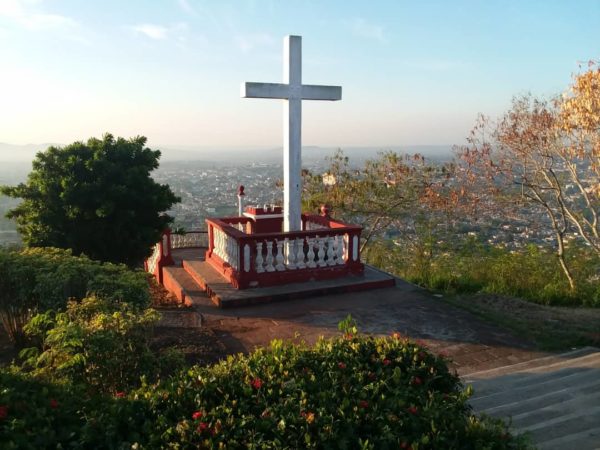Spirituality in Socialist Cuba

By Lien Estrada
HAVANA TIMES – When the Spanish writer María Llopis asked feminist artist Alicia Murillo in her interview, “Why do we turn to spirituality?” She replied: “To understand what the hell we’re doing here.” Murillo is right, although her theological response might seem somewhat irreverent, it holds truth. Perhaps it’s due to the human need to know who we are, where we come from, and where we are going that we encounter so many religious realities everywhere. Whether in tribal cultures like the Far East or the postmodern and aspiring-to-progress West, the truth is that we will find faith, spirituality sooner or later.
Cuba, in its purported construction of socialism as an ideal society, thought, as Marxism asserts, that culture would replace religiosity. It was when some reprisals were politically allowed against those who professed any kind of religious belief. Belonging to a Christian, Catholic, or Protestant community was enough to deny access to certain educational or job opportunities, such as military careers or even joining the Communist Party, for example, the only legal one to this day. A question that was often asked in many application interviews was whether one belonged to any religious institution or tradition.
Processions, whether Catholic, Episcopal, Yoruba, or from any other religious tradition, were prohibited. The latter were allowed again in 1994. Jehovah’s Witnesses, due to their religious principles, were considered “unpatriotic to the system,” a serious matter for these leaders who prioritize ideologies over life itself. It was (and is) considered a crime, and mechanisms were created to limit their opportunities to continue studying after the Ninth grade. Similar experiences were lived in the Seventh-day Adventist community, who, assuming Saturday as a fundamental day for worship, had their final exams scheduled by the Revolutionary State on Saturdays, partly to discourage the participation of men and women of this denomination.
There were various ways in which the Cuban communist government exercised (and still exercises) its necessary power to instill a materialistic, Marxist, dialectical mindset. And there were generations that suffered more than others from this kind of dictatorial politics since 1959. Many churches, missions, and religious works were closed down. Along with convents, schools, and other lesser-known centers like bakeries, for example, and other projects carried out by the ecclesiastical order, were eliminated or rather disappeared, passing into state hands. Converted into centers like the Federation of Cuban Women in Havana, or secular boarding schools throughout the country.
While strategies were deployed for the eradication of religious culture in the country in favor of another so different as the Soviet model, which had practically become a paradigm, Christian resistance persisted, along with other spiritualities worthy of praise.
Although decimated, Kingdom Halls did not completely disappear. Neither did the Cordón Spiritualists or the so-called Scientists. Similarly, Palo Monte, Yorubas, and Abacuá persisted. Christian churches, admittedly with very few members, continued to hold masses and services, and many people continued to read their Bibles, pray, perform rituals, keep altars discreetly in their homes, candles for their saints were also present. And if professors and seminarians were taken to concentration camps (the so-called UMAP: Military Units in Support of Production), created to “rehabilitate” Cubans who did not conform to the new ideals, including homosexuals, “delinquents,” and religious people… it is also true that some seminaries continued to train pastors and ecclesiastical leaders.
Reality responded day by day and unequivocally; one could say that there was a need to grow culturally while respecting the religious order in the lives of all individuals. One fact did not exclude the other. They complemented each other.
The man or woman who went to a religious service or drumming session could also attend a concert hall, a poetry recital, or an art exhibition. An actress could believe in God and the Pope, and a dancer could seek advice from his godfather in his Afro-religion. The time came to consider such, and it was done, that members of the Apostolic Catholic Church joined the Communist Party of Cuba, as was the case with the historian of Havana, Eusebio Leal.
Given what has been presented so far, it should not surprise us, sixty-five years after the political arrival of the Cuban Revolution, declared socialist since 1961, to encounter people exercising their right to spiritual practices. Such as fulfilling promises to their gods, orishas, or any entity they believe in.
This is why encountering a woman with glasses, dressed in white, advancing on her knees and arms along the top of the hill known in Holguín as Loma de la Cruz, should not alarm me too much.
It is true that questions could arise, such as: does she suffer from dementia? But then our mental, cultural, religious construction immediately responds: no, it is not dementia. White clothing, Loma de la Cruz, eccentric attitude could be perceived, but in this context, it can also be understood as humble, even humiliating, as some of our many religious paths suggest for encountering that God.
I was passing through that area doing my physical exercises when she passed by my side also with her purpose. Surely very similar to mine: to strengthen ourselves in this life. Because the challenges are many, and one doesn’t know how long our mission on this earth is.
Read more from the diary of Lien Estrada here on Havana Times.





